
Tik Tok, taking you to every corner of China!
How does one of China's most popular platforms influence marginal areas?
This August, when I was browsing online newspapers, a piece of news about a small county in China popped up several times; a county that I had never heard of before. I was curious what might have happened in that area, so I clicked the link. It turned out to be an interesting news item with the heading: "古蔺县长开抖音卖脆红李, 点赞近万!", which can be loosely translated as: "The county magistrate of Gulin sells plums on Tik Tok, causing a sensation on internet!"
This piece of news triggered my interest in Tik Tok, currently the most popular app in China, and its influence on marginal areas of China. In this article I will try to unravel this mysterious piece of online news and show how Tik Tok presents us with a new perspective to see China.
Tik Tok in Gulin County
The county mentioned in the news article is called Gulin (Chinese: 古蔺), a small county located in deep south of Sichuan Basin, Luzhou city, Sichuan Province. It is an agricultural county with a population composed of thirteen ethnic groups.
Gulin is one of the national poverty counties in China, which means that the economic index of the county and the residents’ average annual income is lower than the national standard. Therefore, it receives special supported from the central government to improve people’s life. This remote area with many ethnic minorities is perceived as a geopolitical and geoeconomic margin in China.
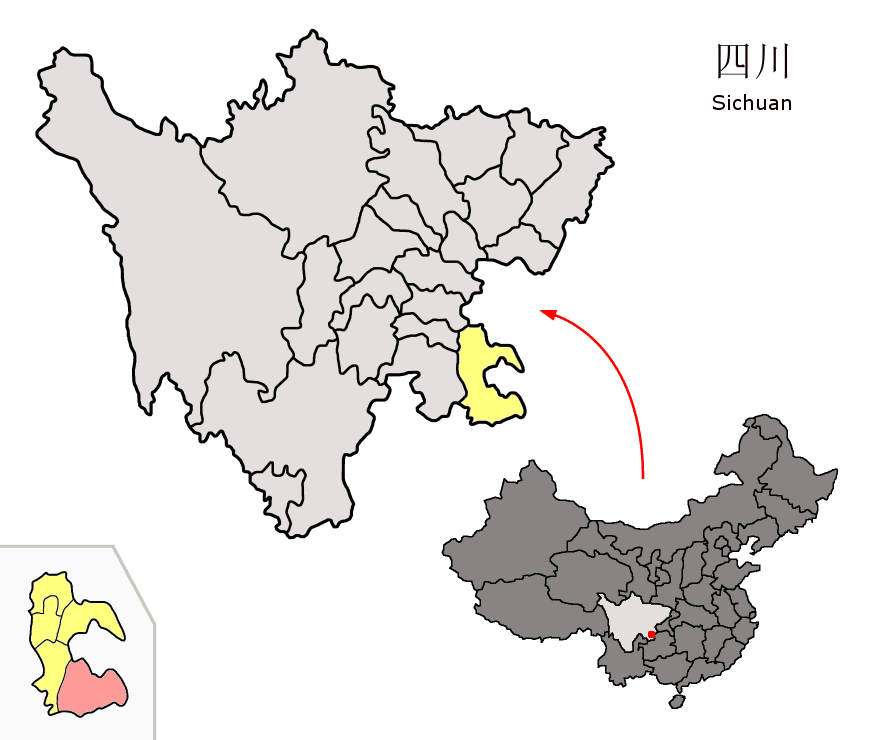
Figure 1: Location of Gulin County, Sichuan Province
Gulin is such an obscure place in China that people do not pay much attention to it. However, the county suddenly became famous through a mere 39-second long video. The magistrate of Gulen uploaded the video as a marketing strategy to sell plums from farmers in his county via Tik Tok.
In the video, he is in a plum orchard and tastes the fruit himself. He then advertises the product in his dialect:
“小小脆红李,小果大产业。古蔺有李,扶贫有情。我是古蔺县人民政府县长陈廷俊,我为古蔺脆红李代言”, which can be translated as: “Although plums are small, they can be a big industry. Buying our plums in Gulin helps to alleviate poverty here. I am Tingjun Chen, the county magistrate of Gulin. I represent for the plums in Gulin.”
His advertisement was liked by more than ten thousand Tik Tok users in a short period of time and was shared numerous times on many other social media platforms in China such as WeChat (a social media app similar to WhatsApp). The short video resulted in more than 150.000 kg plums sold, worth over 1,8 million RMB of income (about 225.000 euro).
It is quite rare to see an official advertising on a grassroot media platform in China, which accounts for the video's sudden popularity. When the magistrate was asked why he chose Tik Tok to publish his promotion, he told the press:
“选择抖音宣传脆红李,主要是考虑到平台的受众群体广泛、发展空间大,同时也有利于电商平台的合作”, which translates to: “The reason why I chose Tik Tok to promote our plums is because this platform has a wide range of users, which provides better opportunities to do advertisements. At the same time, this platform facilitates our cooperation with e-commerce platforms.”
So, what is the charm of Tik Tok, which even attracts (local) government officials to get involved?
Tik Tok's popularity
Tik Tok, also known as Douyin (Chinese: 抖音) in China, is a social media app for creating and sharing short videos as well as supporting live broadcasting. The mobile app allows users to watch musical clips, lip-sync to songs, film short videos and edit them with built-in special effects, filters, and stickers.

Figure 2: Tik Tok logo
According to Sensor Tower, an app analytics platform (cited in BUSINESS INSIDER), Tik Tok has become a "total phenomenon" in China. In the first quarter of 2018, the app was downloaded an estimated 45,8 million times, which ranked first on the top 10 most-downloaded iPhone apps, not counting users of other operating systems.
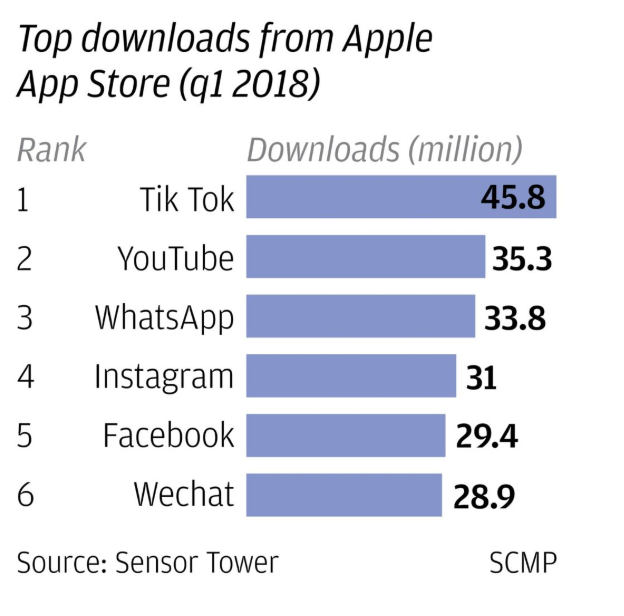
Figure 3: Top downloads from Apple App store q1 2018
On July 17, the Chinese tech firm Beijing Bytedance that developed Tik Tok, said that the number of its global monthly active users has hit 500 million.
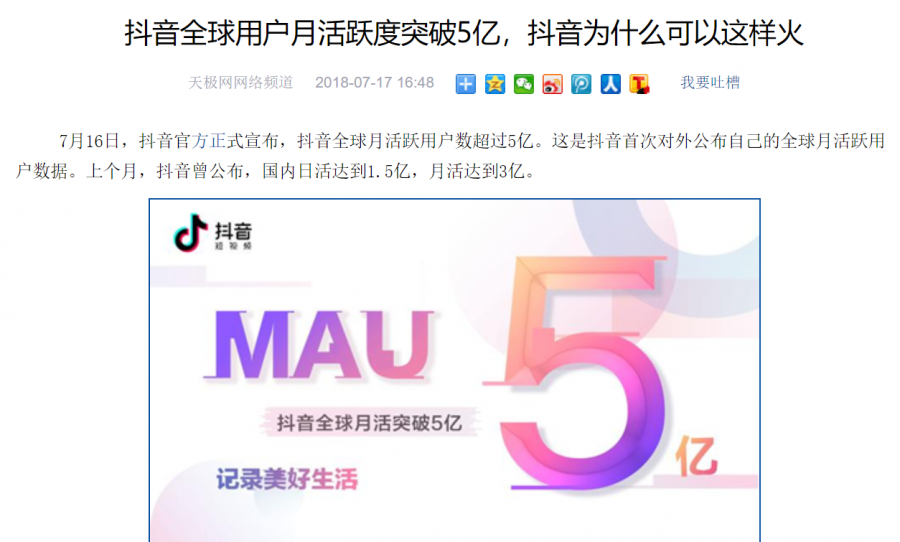
Figure 4 : Global monthly active users hit 500 million
From these news articles, we can see how popular Tik Tok is and how influential it can be. The enormous number of users on Tik Tok empowers the platform as a medium to spread news and information to a massive audience at lightning speed. This explains why it even attracts government officials.
Reasons for Tik Tok's success
Tik Tok, as a social media app focusing on short videos, faces fierce competition domestically and internationally. There are many similar apps in China, including “快手" (Kuaishou), “火山小视频" (Huoshan), “美拍" (Meipai) and “秒拍" (Miaopai) and outside China, including Vine and music.ly (the latter one merged with Tik Tok).
Still, Tik Tok outcompetes them all in China. The reasons behind its success are intriguing. According to the analysis of technode, a China-based information outlet, there are eight reasons for Tik Tok’s commendable success:
- Helping users grow: Tik Tok actively promotes creator’s videos by increasing their traffic, which results in retention of present creators while attracting more creators.
- Unleashing the creativity of ordinary people: Many viral videos on Tik Tok are not created by celebrities, but by ordinary people who show something creative or impressive that inspires and encourages other people to become creators.
- Topic marketing: Tik Tok regularly launches hashtags that serve as trending topics or themes on the platform for users to create videos around. Leading the trend on social media attracts more users to follow.
- Make content creation easy: Tik Tok provides a toolkit to help creators make videos almost effortlessly. Their large library of background music, a variety of filters and easy-to-use editing tools enables anyone with a smartphone and a good idea to create a 15-second video that could potentially go viral.
- Turning the comment section into a social hub: Tik Tok has a comment section underneath each video, which has become a social hub where users interact. It is often as entertaining as the video itself.
- Personalized recommendations to users: Tik Tok’s core competency is making use of machine learning and algorithms to determine what kind of content would appeal to particular users based on their past viewing behavior.
- Where there is content, there is commerce: Tik Tok cooperates with some commercial platforms (B2B) to help creators translate their traffic into monetary earnings. For example, with lots of fans liking their videos, creators can put a link in the video to their shops on Taobao (a Chinese online shopping website owned by Alibaba) for example, or attract fans to their physical shops. Taking ads and putting them in their videos is also a common strategy to make money.
- Taking it global: Tik Tok also launched their business overseas and has become quite successful, especially in Southeast Asian countries like Thailand, Indonesia, Vietnam, and countries like Japan and South Korea. Now that Tik Tok has bought musical.ly (August 2, 2018), they are taking American markets on board as well.
Availability of infrustructures
Tik Tok is readily available as long as you have a mobile phone with an internet connection. According to Wang (2013), access to internet and mobile phone technology creates infrastructures for globalization in the margins. That is to say, globalization processes occur in margins the moment people use social media.
However, margins are featured with unequal access to infrastructures of globalization. If mobile phones or internet access in China’s marginal areas are less accessible or even inaccessible, Tik Tok will be something alien to these areas.
According to the statistical report on internet development in China (CNNIC report, 2018), “as of December 2017, the number of internet users in Chinese rural areas was 209 million, accounting for 27% of the national total netizens.”
And as for why non-internet users don’t access the internet, CNNIC report (2018) showed that only 5,2% of them have no local access to the internet, the main reason being e-illiteracy. Besides, by December 2017, 97,5% of Chinese netizens accessed the internet via their mobile phones. What we can see from these numbers is that the accessibility of internet and mobile phones in China’s rural areas make it possible for Tik Tok to penetrate.
Influence in China's marginal areas
With the infrastructures of globalization accessible, Tik Tok is now exercising great influence in China’s margins. In the case of the county magistrate of Gulin, the traffic generated by the video translated into orders on many e-commerce platforms in China. It directly brings economic benefits to the county.
As a matter of fact, what Tingjun Chen did is just one example of a many similar cases. Due to the popularity of Tik Tok, a great number of Chinese government organizations are creating their official accounts on the platform to help with the publicity of government affairs.
According to Appadurai’s five dimensions of cultural scapes, mediascapes refer to the distribution of the electronic capacities of both private and public interests to produce and disseminate information. The information produced is always image-centered and narrative-based which can influence the locals and people living in other places (Appadurai, 1996). Tik Tok has been perceived by local governments as a new and powerful medium to exercise influence.
To name one example out of many, Beijing Public Security Bureau Anti-Terrorist Special Police Corps created their account “北京SWAT” (Beijing SWAT) on Tik Tok in May 2018 to show people their daily life activities and training routines. Their first short video was liked 8,76 million times, and accumulated over 183.000 comments.
Apart from product selling and publicity of government affairs, government organizations also focus on tourism advertising. Luanchuan county (Chinese: 栾川), a national poverty county in the Henan province, has abundant tourism resources, but due to its lack of national fame, it only attracts tourists from surrounding areas.
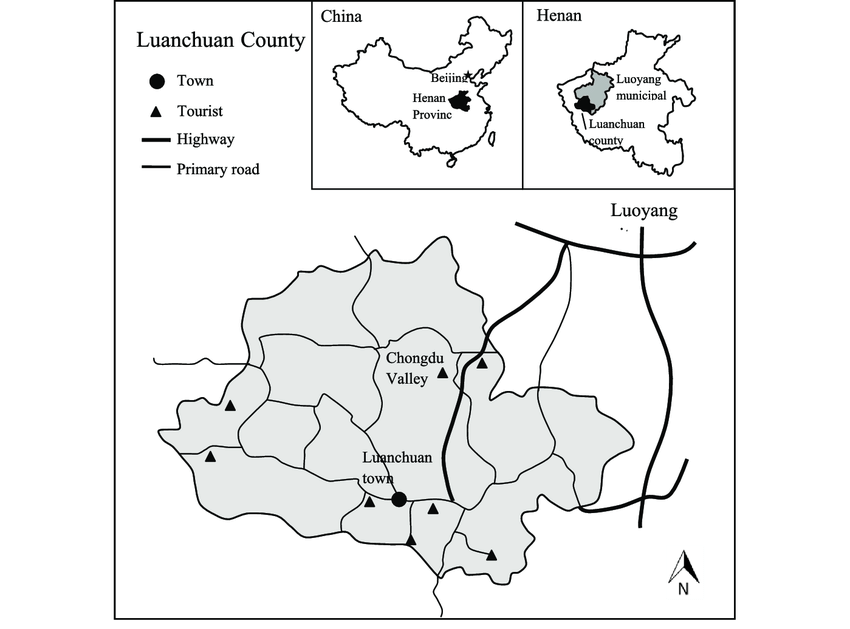
Figure 5 : Location of Luanchuan
The Luanchuan Tourism Working Committee created their account on Tik Tok named “奇境栾川” (Wonderland Luanchuan). They published short videos of Luanchuan’s natural scenery on Tik Tok, which attracted a huge number of tourists to the county. It is at present a hot tourist site in China.
According to a news article from Sina, 315,900 tourists visited Luanchuan during the holidays of National Day in China. This sudden fame generated a total income of 278 million RMB (about 37,5 million euro), which greatly improved its economy and people’s lives. Tik Tok has fundamentally changed traditional advertising industry in China and this revolutionary change brings great opportunities for marginal areas.
Advertising on Tik Tok by governments and other public interest groups provides great opportunities for marginal areas to develop, while Tik Tok as a grassroot platform is more of a medium for private interests. People from marginal areas use these developments to improve their own lives as well.
As was mentioned before, 209 million people of the rural population in China are netizens. A large proportion of them are young generations who are educated and e-literate. These young generations create their Tik Tok accounts and film videos of their hometown such as natural scenery, countryside life, food, home-made cooking, and special customs to attract followers.
With lots of followers liking them, these creators can promote their agricultural products or home-made specialties to them.
Tik Tok's Countryside boy
Taking an example from thousands of others, a young man from Southeast Guizhou Miao and Dong Autonomous Prefecture in Guizhou province, a remote ethnic minority area with special customs, currently has 745.000 fans on Tik Tok. His internet handle is “农村小野” (Countryside boy).
This young man records short videos about the ethnic lifestyle in his hometown which attract lots of views. In the comment section, users ask to buy the agricultural products he broadcasts and his Tik Tok account is linked to his e-commerce shop.
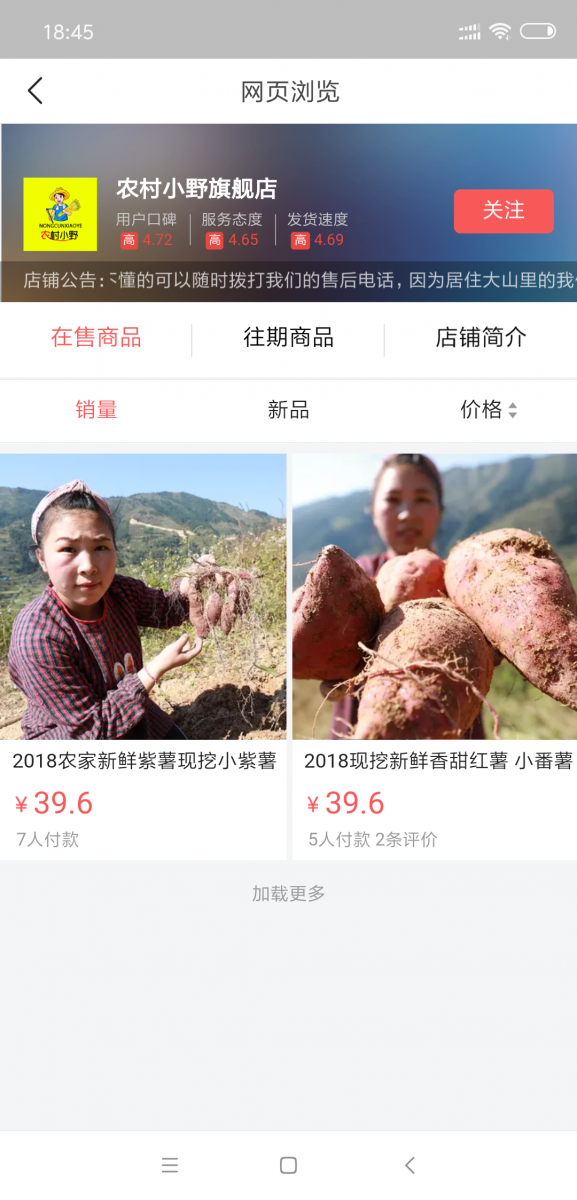
Figure 6: Screenshot of Countryside boy's online shop
Turning his traffic into economic profit is a way in which Countryside Boy can improve his and his family's living standards. It shows how Tik Tok influences people in marginal areas. In addition, his videos attract people to visit his hometown or learn about their special customs through Tik Tok. This is another dimension of cultural scape mentioned by Appadurai (1996), the ethnoscape: the landscape of persons who constitute the shifting world we live in.
However, not many people in marginal areas are as versed in self-media operation as that young man in Guizhou, a large portion of the population is actually e-illiterate. According to CNNIC report (2018), 53,5% non-netizens don’t access the internet due to a lack of knowledge on computers or internet. The role Tik Tok plays under these circumstances is then to act as a window to show thousands of millions of users who hold their mobile phones in the comfort of their homes in urban areas the underdeveloped conditions of marginal areas.
Tik Tok allows people to see those in urgent need and inspires people to offer help.
Many organizations and individuals are creating Tik Tok videos to direct people’s attention towards these marginal areas. These videos motivate a larger number of people to get involved in charity assistances. One distinguished example is a Chinese entrepreneur named Ziqing Wang (Chinese: 王子清) who published hundreds of videos of him helping destitute and unattended elders and children in the most remote areas in China. His videos reveal the appalling living conditions of some families that are unimaginable by many Tik Tok users. He has almost four million fans and his videos were liked over forty million times. His benevolence moved a large number of users who earnestly want to help in some way as well.
It generates an immense social impact on marginal areas. There are numerous examples of Tik Tok creators filming videos to call for attention to the people in need, and lots of people in those areas are helped in this way.
Global connection
Tik Tok, one of the most popular short video and social media apps in China, plays a significant role in the globalization of the margins on both the government and the individual layer. Government organizations in marginal areas use Tik Tok as a medium to advertise products and tourism to develop regional economies. Individuals who are educated and e-literate in these areas use the opportunity to improve their lives and at the same time cause cultural shifts.
However, Tik Tok is also used as a medium to transmit information about marginal regions of China to the rest of the world. The world has become a network society that it is connected by the internet. Tik Tok is then a tool to accelerate, intensify, and broaden the influence of this network to the marginal areas.
References
Appadurai, A. (1996). Modernity at Large: Cultural Dimensions of Globalization. Minneapolis and London: University of Minnesota Press.
Wang, X., Spotti, M., Juffermans, K., Cornips, L., Kroon, S., & Blommaert, J. (2013). Globalization in the Margins Toward a re-evalution of language and mobility. Applied Linguistics Review 5 (1), 23-44.
CNNIC, 2018. The 41st Statistical Report on Internet Development in China.